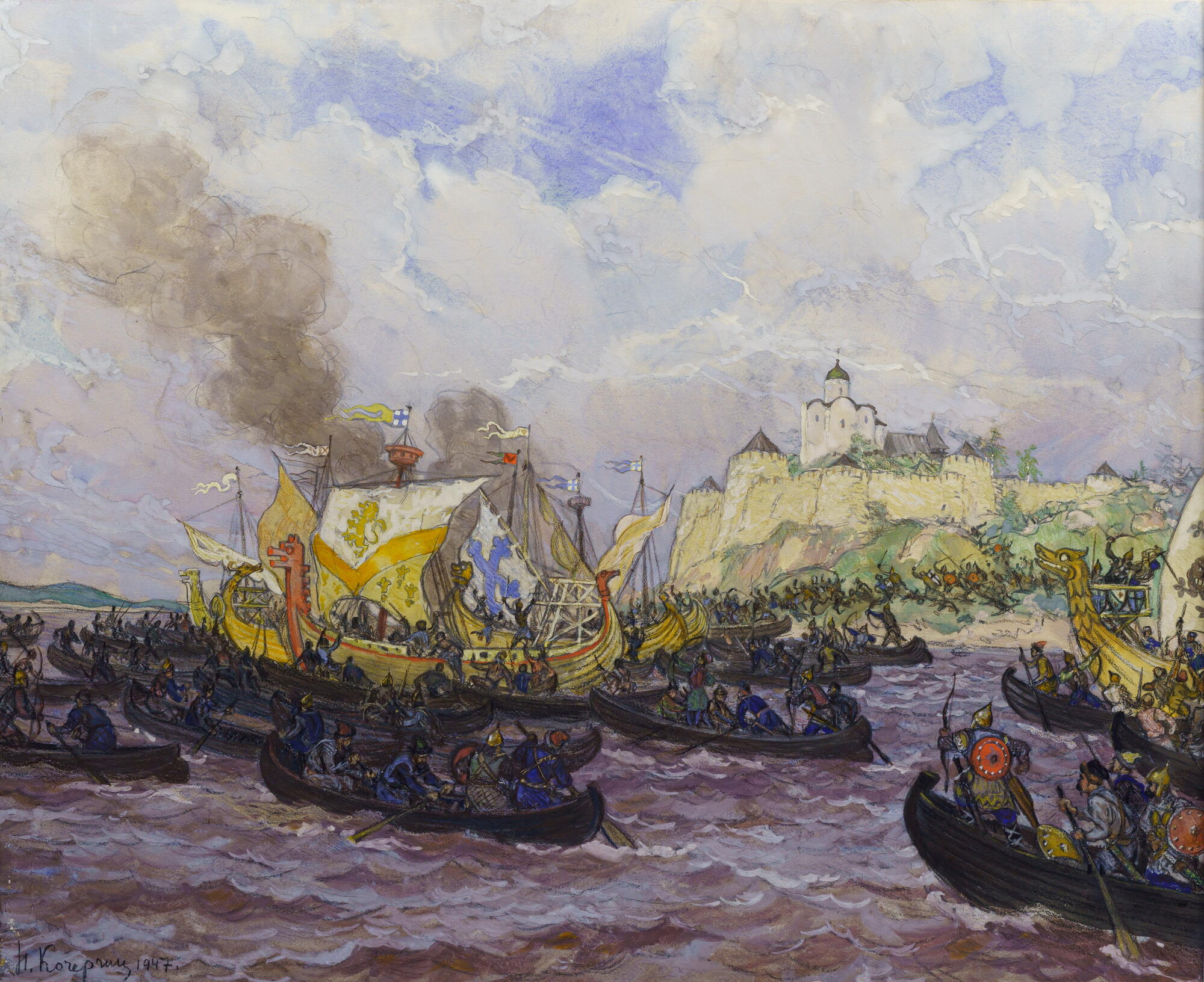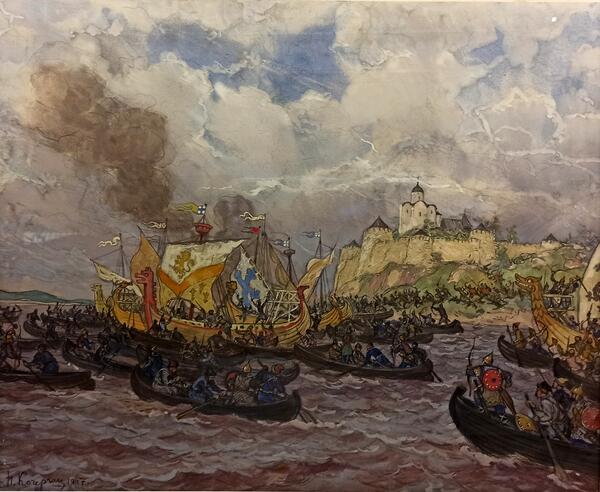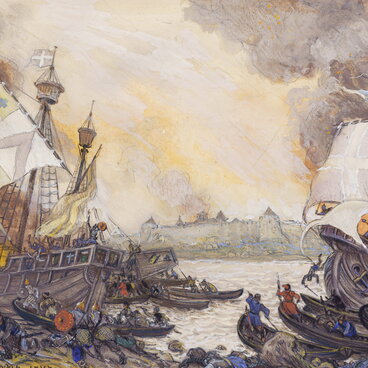The marine navigation of the residents of northern Russian territories was characterized by its own unique features, with military campaigns being relatively rare. The main occupation of local mariners was the sea trade. According to medieval chroniclers, in 1130, Russian merchant ships brought goods to the island of Gotland (Sweden) and the coast of Denmark. The Novgorodians even had their own merchant court, residential buildings, and church in the town of Visby on the island of Gotland. They delivered goods from India, Persia, the Arab Caliphate, and the Khazar Khaganate to Northern Europe. By the early 13th century, around 70 free cities across the Baltic region formed the Hanseatic League, after which Novgorod became a trade center of European importance: the Hanse established a residence there.
Now and then the Novgorodians were forced to conduct naval operations. The Swedes tried to capture the Ladoga Fortress which was of strategic importance for the Novgorodians because it protected the route to Novgorod from the north and served as their base in Karelia and Ingria. In 1164, a Swedish fleet in the number of 55 vessels with naval assault forces of around 3,000 sailors came to Ladoga. The locals were few in numbers and were unable to stop the enemy from landing, however, they managed to send a messenger to bring help from Novgorod and hid in the fortress. For four days, the Swedes stormed the Ladoga Fortress to no avail — the garrison headed by the mayor Nezhata made a brave defense. Having suffered extensive losses, the enemy retreated to the Voronaya River where it was battered by the newly arrived forces from Novgorod. The enemy lost 43 vessels and most of the crew. The surviving members of the defeated Swedish troops escaped on 12 remaining ships.
After suffering a defeat on the Voronaya River, the Swedes were forced to abandon the idea of military campaigns against Rus for some time. However, they increased pirate attacks on Russian ships in the Baltic Sea, aiming to paralyze the Novgorodian trade and cut off the sea trade route. To support their sea trade in the Baltic region, the Novgorodians started preparing for a large-scale naval campaign against Sweden. In 1187, they exacted vengeance on the Swedes for their repeated attacks and offenses. Together with the Karelians, the Novgorodians led a campaign against Sweden and wiped out the wealthy town of Sigtuna located near modern Stockholm.
Now and then the Novgorodians were forced to conduct naval operations. The Swedes tried to capture the Ladoga Fortress which was of strategic importance for the Novgorodians because it protected the route to Novgorod from the north and served as their base in Karelia and Ingria. In 1164, a Swedish fleet in the number of 55 vessels with naval assault forces of around 3,000 sailors came to Ladoga. The locals were few in numbers and were unable to stop the enemy from landing, however, they managed to send a messenger to bring help from Novgorod and hid in the fortress. For four days, the Swedes stormed the Ladoga Fortress to no avail — the garrison headed by the mayor Nezhata made a brave defense. Having suffered extensive losses, the enemy retreated to the Voronaya River where it was battered by the newly arrived forces from Novgorod. The enemy lost 43 vessels and most of the crew. The surviving members of the defeated Swedish troops escaped on 12 remaining ships.
After suffering a defeat on the Voronaya River, the Swedes were forced to abandon the idea of military campaigns against Rus for some time. However, they increased pirate attacks on Russian ships in the Baltic Sea, aiming to paralyze the Novgorodian trade and cut off the sea trade route. To support their sea trade in the Baltic region, the Novgorodians started preparing for a large-scale naval campaign against Sweden. In 1187, they exacted vengeance on the Swedes for their repeated attacks and offenses. Together with the Karelians, the Novgorodians led a campaign against Sweden and wiped out the wealthy town of Sigtuna located near modern Stockholm.







